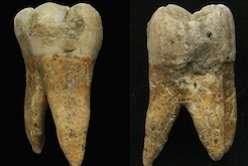Prehistoric teeth give up their secrets

The isotope values of food consumed are reflected in the individual's tissues. As bone is constantly being turned over by remodelling, analysing the stable isotope ratios of bone collagen can shine a light on the main dietary protein sources consumed over many years. New research uses this factor to analyse diet, migration and society between the Neolithic (6,500 – 4,500 BC) and Iron Age (900—100 BC).
The application of up-to-date, interdisciplinary methodologies with low-cost approaches (such as dental morphology and isotope analyses) in archaeology is revolutionising our understanding of the interactions between ancient human populations and their environment. This interaction could reveal information on the evolution of various socio-cultural systems.
The EU's ANCIENT TEETH research aimed to characterise, for the first time, changes in dental traits of past European populations and the factors influencing these transitions. Principle researcher Dr. Beatriz Gamarra Rubio considered population movements on the Great Hungarian Plain (GHP) from the onset of agriculture in the Neolithic period, to the Iron Age.
Supported by the Marie Curie programme, she employed microCT technology to obtain the 3-D digital models needed to analyse the shape of the enamel-dentine junction (EDJ) by means of the geometric morphometric technique.
"The results obtained are still preliminary, but they show that at Copper Age (4,500 – 2,700 BC) and Bronze Age (2,700 – 900 BC) peoples who lived in the GHP had different EDJ morphology, which suggests that they have a different population origin," explains Dr. Gamarra. This aligns with research carried out by her principal supervisor, Prof. Ron Pinhasi, showing the migration patterns of populations from the east to the GHP by the advent of the Bronze Age.
To analyse the population's diet, Dr. Gamarra looked at the content of carbon and nitrogen isotopes contained in the bone collagen. "This allows us to to infer the amount of animal/plant protein these people were eating, characterising the diet of these past individuals."
They found that the people who lived in the GHP from Neolithic to Early Bronze Age were consuming cultivated plants, such as wheat and barley, and different amounts of meat as a result of their farming practices. But by the Late Bronze Age people were eating other types of cereal, including millet. "This new crop was most probably brought in by people from the east, as a result of a wave of migration during the Bronze Age."
The past shows the way for the future
Understanding the effects of diet changes in past populations will help to explain the origin of challenging contemporary dental health problems. In doing so, the project hopes we'll be able to understand the adaptability of human teeth to current and future dietary changes, which may be of benefit for clinicians to better manage dental health requirements.
"The data produced from high-resolution micro-CT scans of human teeth is an invaluable resource for evidence-based research proposals. The information can be used by those calling for change in health policies of European countries, for instance in nutrition and dietary subsistence management," says Dr. Gamarra.
She is certain that the key to the project's success was collaboration. "The use of multiple approaches from different fields to interpret a complex issue such as agriculture transition is vital. Collaboration helps to establish and refine essential research questions, enriches the experience and mentoring of researchers, and gives early researchers the opportunity to develop independent academic skills."
Provided by CORDIS


















